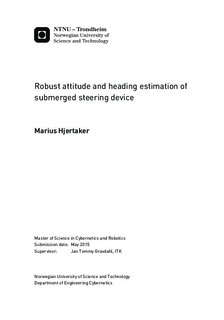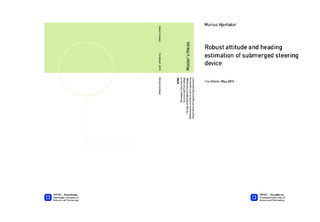| dc.description.abstract | The accuracy of seismic surveys are vital in order obtain accurate and good analysis of the gathered data. This can be done using seismic cable control, where underwater steering devices guides and stabilizes the cables. In order for these underwater steering devices to have as accurate control as possible are a attitude observer beneficial. The orientation of the seismic cables would also help correcting and interpreting data gathered under the seismic surveys.
The industry standard observer for attitude estimations have for decades been the extended Kalman filter. However, extensive research the recent years on non-linear observers are changing this. Enabling a smaller footprint on the embedded system, and by fusing low-cost inertial sensors.
The main objective of this thesis are to implemented and experimentally test, with both simulated and experimental collected data, attitude observers integrating inertial measurements obtained from a inertial measurement unit (IMU). Enhancing there benefits and limitations.
A extensive literature study looking for different methods for attitude estimation, aspects related to attitude representation and current attitude observers solutions for seismic cables are presented. The main aspects of the selected observers are presented with a further uncomplicated full overview and tuning properties.
By merging different properties, form two different papers, have the author proposed a new locally exponentially stable attitude observer, witch will globally decouple the roll and pitch estimates from yaw and magnetometer measurements. Moreover, all the observers are compared and given a clear overview of their estimation performance. Where their heading (yaw) estimation capability s are emphasized.
A simulation model capable of simulating the IMU data from a dynamic model, governed by angular velocities or input torques are also made. Calibration procedures of the raw experimental sensor measurements, using a batch based iterative calibration, are also presented. | |

